Wild Thalarians
Culture of mixed races
This ethnicity, shaped by the union of nature-bound humans and honor-driven orc clans, represents a harmonious blend of two powerful traditions. The humans, deeply rooted in the cycles of the land, brought their knowledge of the natural world, familial loyalty, and rich oral traditions. The orcs, with their emphasis on strength, resilience, and a strict code of honor, infused the culture with their warrior ethos and unshakable pride. Together, they have created a society where humans, orcs, and half-ors coexist, balancing reverence for the earth with the pursuit of strength and unity. This unique culture thrives in its dual heritage, finding power in both nature's wisdom and the might of its people.Naming Traditions
Feminine names
In this culture, especially with deep ties to nature, women's names are often inspired by the beauty, resilience, and mystique of the natural world. These names reflect the characteristics admired in nature—grace, strength, and harmony—and carry symbolic meanings that connect the individual to the earth, seasons, and celestial phenomena. For example, names like "Lunara" might evoke the quiet power of the moon, while "Sylvara" could symbolize the steadfast beauty of silver mist drifting through ancient forests. Names inspired by flowers, rivers, or celestial bodies not only honor the life-giving aspects of nature but also embody its duality—delicate yet enduring, soft yet formidable. Such names serve as a poetic reminder of humanity's enduring bond with the natural world and the qualities it instills in those who bear them.It is atradition, that only mother, grandmother, or elder woman might choose a name for female newborns.
Celestial Inspiration:
Lunara – Evoking the moon's serene glow.
Solara – Inspired by the radiant power of the sun.
Astrina – Reflecting the mystique of the stars.
Elari – Derived from the shimmering beauty of constellations.
Flora and Fauna:
Sylvanna – Inspired by the majesty of forests and trees.
Rosira – Symbolizing the elegance and thorns of a rose.
Faelith – Reflecting a bond with woodland creatures.
Aquatic Themes:
Serenya – Mimicking the gentle flow of a peaceful river.
Thalina – Inspired by the vast and mysterious sea.
Coralyn – Rooted in the vibrant coral reefs.
Mistara – Embodying the ephemeral beauty of morning mist.
Earth and Seasons:
Aurethra – Capturing the golden hues of autumn leaves.
Evannra – Symbolizing rebirth and renewal, like spring.
Brynara – Inspired by rugged cliffs and mountain peaks.
Teralia – A name that reflects the nurturing spirit of the earth.
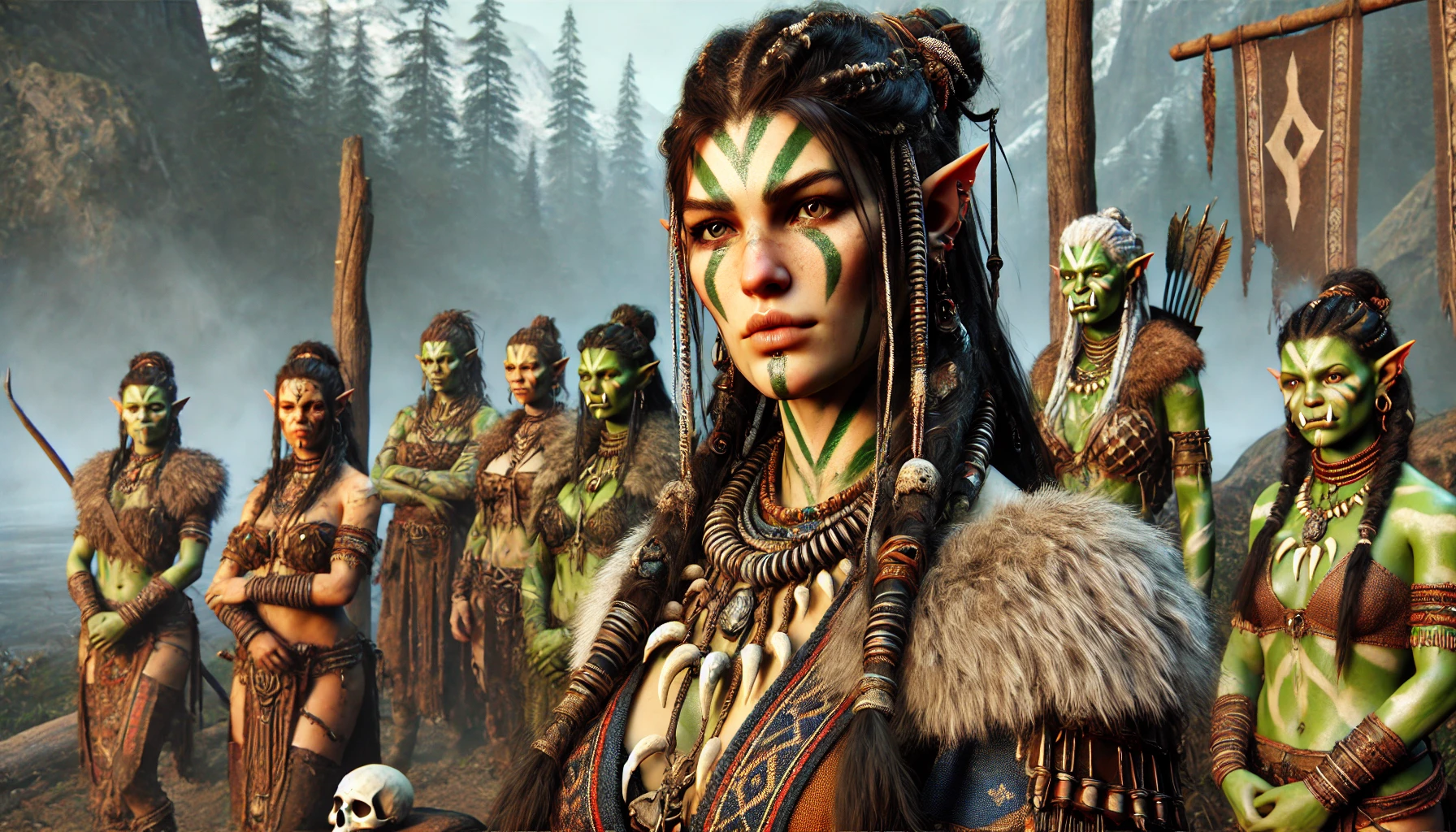
Women of the wild clan
Celestial Inspiration:
Lunara – Evoking the moon's serene glow.
Solara – Inspired by the radiant power of the sun.
Astrina – Reflecting the mystique of the stars.
Elari – Derived from the shimmering beauty of constellations.
Flora and Fauna:
Sylvanna – Inspired by the majesty of forests and trees.
Rosira – Symbolizing the elegance and thorns of a rose.
Faelith – Reflecting a bond with woodland creatures.
Aquatic Themes:
Serenya – Mimicking the gentle flow of a peaceful river.
Thalina – Inspired by the vast and mysterious sea.
Coralyn – Rooted in the vibrant coral reefs.
Mistara – Embodying the ephemeral beauty of morning mist.
Earth and Seasons:
Aurethra – Capturing the golden hues of autumn leaves.
Evannra – Symbolizing rebirth and renewal, like spring.
Brynara – Inspired by rugged cliffs and mountain peaks.
Teralia – A name that reflects the nurturing spirit of the earth.

Masculine names
In many clans, the naming of male newborns is a revered responsibility, entrusted solely to the clan leader. This custom symbolizes the leader's role as the protector and guide of the group, and the chosen name is meant to reflect the strength, endurance, and power expected of the child as he grows into adulthood. Male names are carefully crafted to evoke a sense of capability and resilience, serving both as a source of pride and a reminder of the traits valued by the clan.
Often, these names draw inspiration from the raw elements of nature or the fierce and noble animals that roam the land. A boy might be named for the strength of the bear, the cunning of the wolf, or the keen vision of the eagle, connecting him to the traits of these creatures and the untamed wilderness. Other names might reflect the enduring qualities of mountains, the relentless flow of rivers, or the unyielding force of storms, emphasizing the clan's belief in the unity between man and nature.
By bestowing such names, the clan leader imbues the child with not only a personal identity but also a sense of purpose and connection to the values and spirit of the community.
Animal-Inspired Names:
Wolvar – Evoking the cunning and resilience of a wolf.
Barek – Inspired by the power and strength of a bear.
Thrygar – Reflecting the relentless spirit of a wild boar.
Nature-Inspired Names:
Thalrek – Symbolizing the unstoppable flow of a mighty river.
Brynok – Named for the enduring strength of rugged cliffs.
Dornak – Representing the unyielding force of a mountain.
Sylgar – Evoking the enduring strength of ancient forests.
Element-Inspired Names:
Ignar – Reflecting the fiery and relentless energy of flame.
Voltrak – Inspired by the raw power of lightning.
Aetherak – Embodying the boundless expanse of the sky.
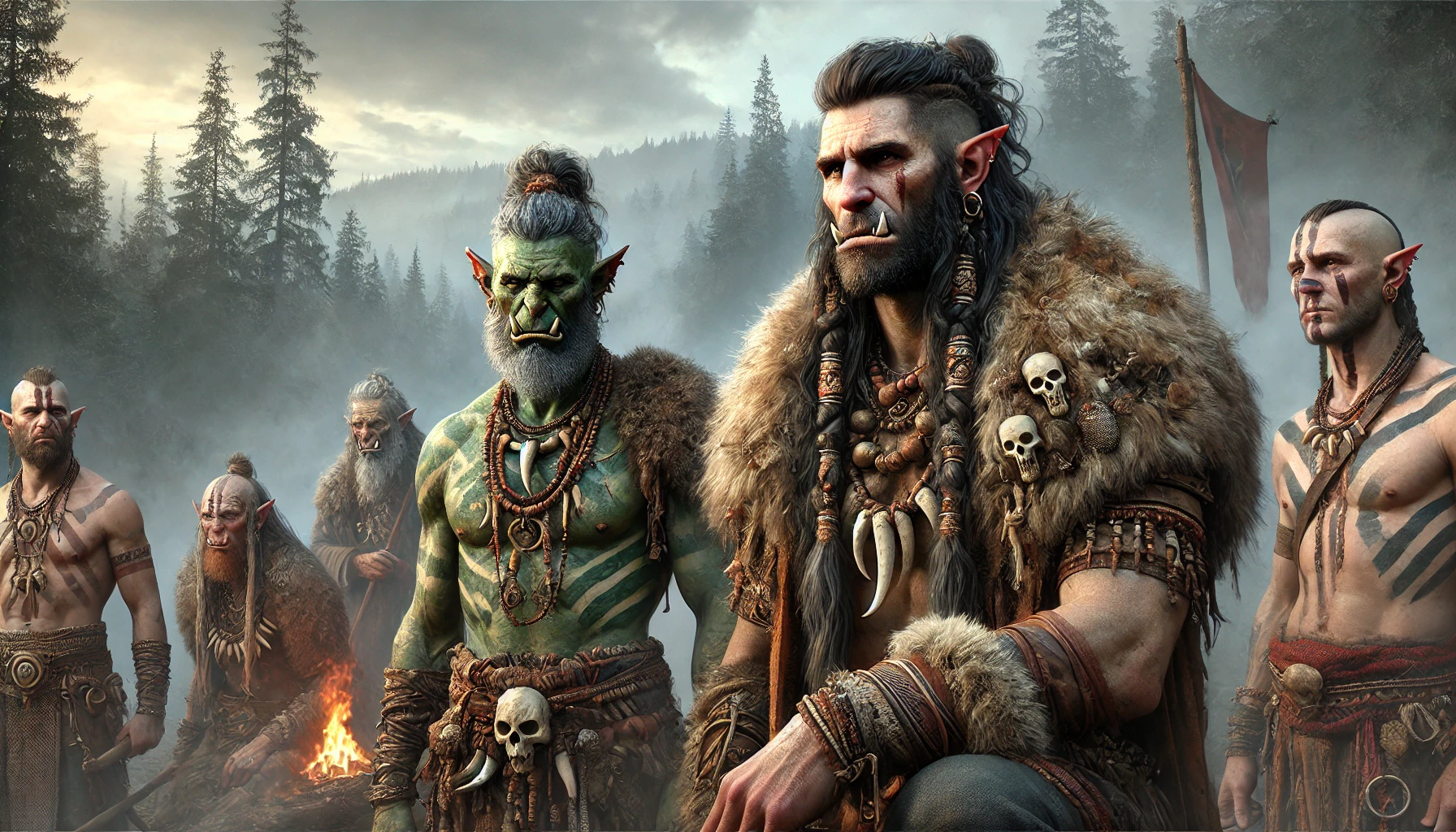
Men of the wild clan
Animal-Inspired Names:
Wolvar – Evoking the cunning and resilience of a wolf.
Barek – Inspired by the power and strength of a bear.
Thrygar – Reflecting the relentless spirit of a wild boar.
Nature-Inspired Names:
Thalrek – Symbolizing the unstoppable flow of a mighty river.
Brynok – Named for the enduring strength of rugged cliffs.
Dornak – Representing the unyielding force of a mountain.
Sylgar – Evoking the enduring strength of ancient forests.
Element-Inspired Names:
Ignar – Reflecting the fiery and relentless energy of flame.
Voltrak – Inspired by the raw power of lightning.
Aetherak – Embodying the boundless expanse of the sky.

Family names
Surnames or family names are often perceived as clan names, and therefore, it is not customary for each family to have a distinct name. Instead, the clan name, typically derived from the leader of the clan, is used. This clan name is passed down through generations and remains unchanged for that particular clan. The clan is viewed as a large extended family, with strong blood ties binding the members together, and each individual proudly carries the name of their clan and its leader. When it comes to marriage, it is customary for unions to occur between individuals from different clans in order to preserve the genetic integrity of the community. The partners must mutually agree on which clan they wish to join, and the one who carries a different name will adopt the clan name of their chosen partner. As a result, both partners will become members of the new clan and live under its name and with that specific clan.
Clan names are usually ancient, passed down through generations. They often describe the natural surroundings, environment or animals that were present where the clan once lived. However, this connection to the original location may no longer be accurate today, due to migration and the movement of clans over time. As a result, the meaning behind the clan name might have shifted or become less relevant to the current living circumstances of its members. Examples:
Ravenar means (Raven-eyed), Graven (White-stony), Wolric (Wolf-like), Seran (River serpent), Sharan (Sharp tree), Tharven (Brave buffalo), Drovak (Rough tribe), Zarlen (Black forest), Rukel (Craggy rocks), Gorvan (High-mountain), Bulric (Burrow diggers)
Clan names are usually ancient, passed down through generations. They often describe the natural surroundings, environment or animals that were present where the clan once lived. However, this connection to the original location may no longer be accurate today, due to migration and the movement of clans over time. As a result, the meaning behind the clan name might have shifted or become less relevant to the current living circumstances of its members. Examples:
Ravenar means (Raven-eyed), Graven (White-stony), Wolric (Wolf-like), Seran (River serpent), Sharan (Sharp tree), Tharven (Brave buffalo), Drovak (Rough tribe), Zarlen (Black forest), Rukel (Craggy rocks), Gorvan (High-mountain), Bulric (Burrow diggers)
Culture
Major language groups and dialects
The clan speaks a shared major language Ģhara that serves as the foundation for communication and tradition. This language is rich in oral storytelling, ceremonial expressions, and poetic structures, reflecting the culture’s deep connection to its history and values. Its tone guttural, emphasizing strength and clarity, with words often inspired by the natural world and the clan’s surroundings.
Within the major language, regional dialects have emerged over time, shaped by the geography, trade, and interactions of different groups. These dialects might vary in pronunciation, vocabulary, or even grammar, reflecting the specific environments and lifestyles of their speakers.
Mountain dialects may include harsher, clipped tones, mirroring the rugged terrain.
Forest dialects might have softer, more melodic inflections, inspired by the sounds of nature.
River dialects could feature fluid and elongated pronunciations, mimicking the flow of water.
The higher ranking members of clans alsou know the common or different languege that is mostly learned from prisoners of for example Syndarians.
Within the major language, regional dialects have emerged over time, shaped by the geography, trade, and interactions of different groups. These dialects might vary in pronunciation, vocabulary, or even grammar, reflecting the specific environments and lifestyles of their speakers.
Mountain dialects may include harsher, clipped tones, mirroring the rugged terrain.
Forest dialects might have softer, more melodic inflections, inspired by the sounds of nature.
River dialects could feature fluid and elongated pronunciations, mimicking the flow of water.
The higher ranking members of clans alsou know the common or different languege that is mostly learned from prisoners of for example Syndarians.
Shared customary codes and values
This culture is deeply rooted in traditions and communal strength, with customary codes and shared values that guide behavior, decision-making, and relationships. These principles are not just rules but a way of life, ensuring the harmony, resilience, and prosperity of the clan.
Loyalty to the clan is paramount. Every action taken by an individual reflects on their family and the community, making integrity and accountability essential. Betrayal of the clan is considered the gravest offense.
Respect the Natural Order:
Nature is both a provider and a force to be reckoned with. Hunting, harvesting, and resource use are governed by respect for the balance of life, ensuring sustainability and gratitude for the bounty provided.
Strength Through Unity:
Members are expected to place the needs of the community above personal desires. Cooperation and mutual aid are key, whether in times of feast or famine, peace or conflict.
Trials of Worthiness:
Important milestones, such as leadership roles, adulthood, or marriage, are marked by tests of skill, strength, or wisdom. These trials serve as rites of passage, reinforcing the values of resilience and capability.
Speak Truth and Stand Firm:
Honesty and conviction are held in high regard. Members are expected to speak their minds respectfully and to uphold their promises and beliefs, even under pressure.

Brakhdar
Friendly ritual fighting is a celebrated tradition in the culture, symbolizing strength, respect, and unity. These matches are not about harm but about testing skill and endurance in a controlled, honorable way. Held during festivals or significant gatherings, fighters often prepare with rituals like war paint or blessings, and bouts are conducted with clear rules to ensure safety and fairness. The focus is on showcasing courage and sportsmanship, with victory taking a backseat to the display of heart and skill. Ritual fighting strengthens bonds, resolves disputes, and teaches younger members the values of strength, control, and honor, reinforcing the community’s shared ideals.
Customary Codes:
Honor the Clan:Loyalty to the clan is paramount. Every action taken by an individual reflects on their family and the community, making integrity and accountability essential. Betrayal of the clan is considered the gravest offense.
Respect the Natural Order:
Nature is both a provider and a force to be reckoned with. Hunting, harvesting, and resource use are governed by respect for the balance of life, ensuring sustainability and gratitude for the bounty provided.
Strength Through Unity:
Members are expected to place the needs of the community above personal desires. Cooperation and mutual aid are key, whether in times of feast or famine, peace or conflict.
Trials of Worthiness:
Important milestones, such as leadership roles, adulthood, or marriage, are marked by tests of skill, strength, or wisdom. These trials serve as rites of passage, reinforcing the values of resilience and capability.
Speak Truth and Stand Firm:
Honesty and conviction are held in high regard. Members are expected to speak their minds respectfully and to uphold their promises and beliefs, even under pressure.

Common Dress code
The dress code in this culture is a blend of practicality, tradition, and personal expression. Men's clothing typically includes durable tunics or leather armor, designed for hunting, work, or combat, often adorned with tribal markings or symbols of strength. Footwear is functional, ranging from sturdy boots for rough terrain to sandals made of woven reeds. Cloaks made from animal furs or thick wool offer warmth in harsher climates, while simple headbands or circlets signify status or role.
Women's attire is equally functional yet graceful, with flowing dresses or tunics made from natural fibers, often cinched with decorated belts or sashes. Fur shawls and cloaks are worn for warmth and style, and jewelry made from bone, wood, or metal adds both beauty and cultural significance. During ceremonial occasions, both men and women don more elaborate garments, such as ceremonial robes or armor, adorned with beads, feathers, and symbolic designs. Overall, the clothing reflects a deep connection to nature, emphasizing resilience, strength, and the wearer's role within the clan, while also serving as a form of personal and cultural identity.
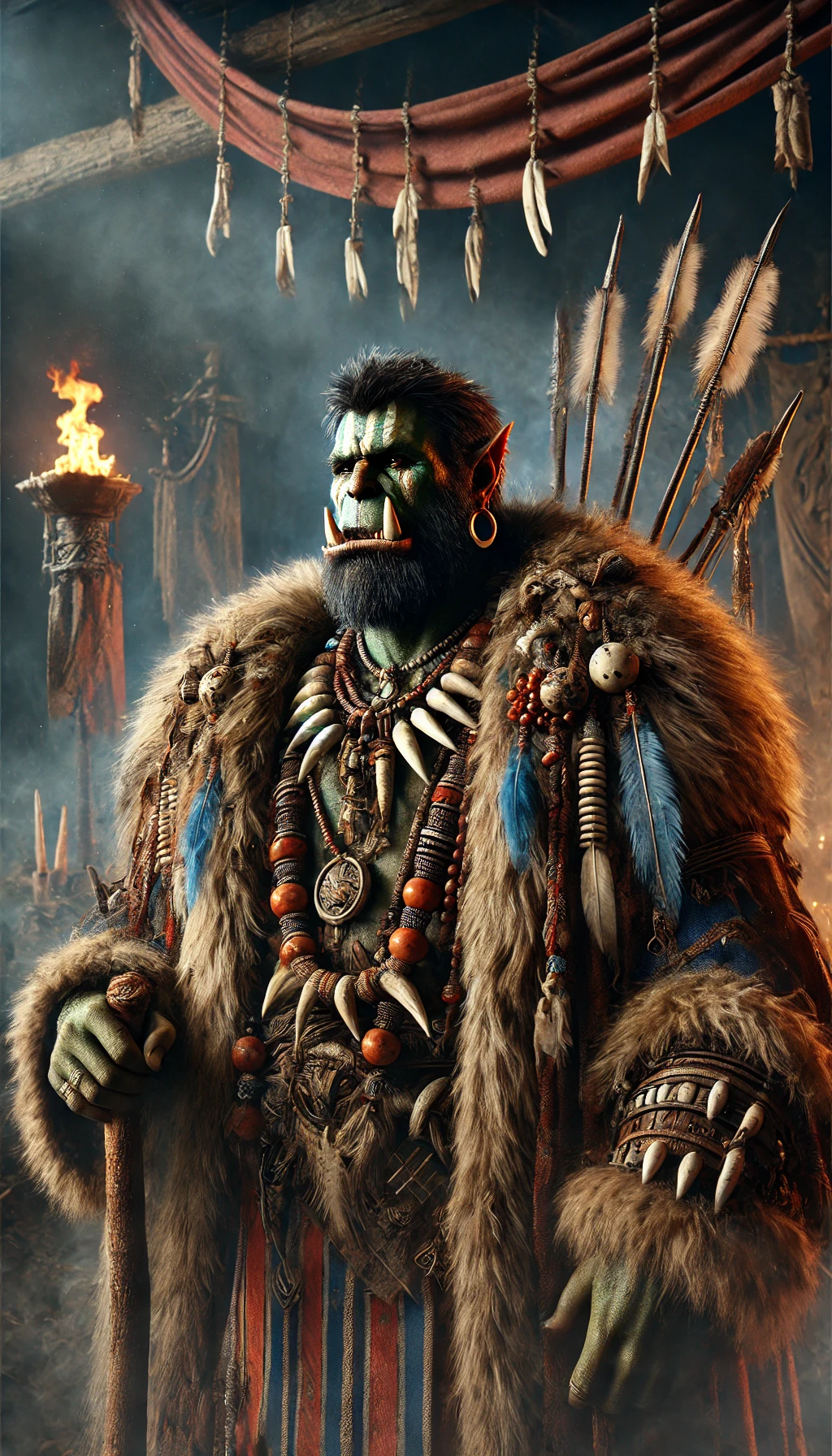
Orcish Clan Leader
The orcish clan leader is a figure of immense strength, wisdom, and authority, revered for their ability to lead through both might and strategic insight. Typically chosen for their proven prowess in battle, leadership, and deep connection to the clan's traditions, they embody the spirit of the clan. Their appearance often includes battle-worn armor, adorned with symbols of their victories and leadership, and they may wear ceremonial regalia such as furs, trophies, or tribal markings. The clan leader is not only a protector but also a guide, responsible for making crucial decisions that ensure the survival and prosperity of the clan, with a fierce loyalty to their people and the natural forces that sustain them.
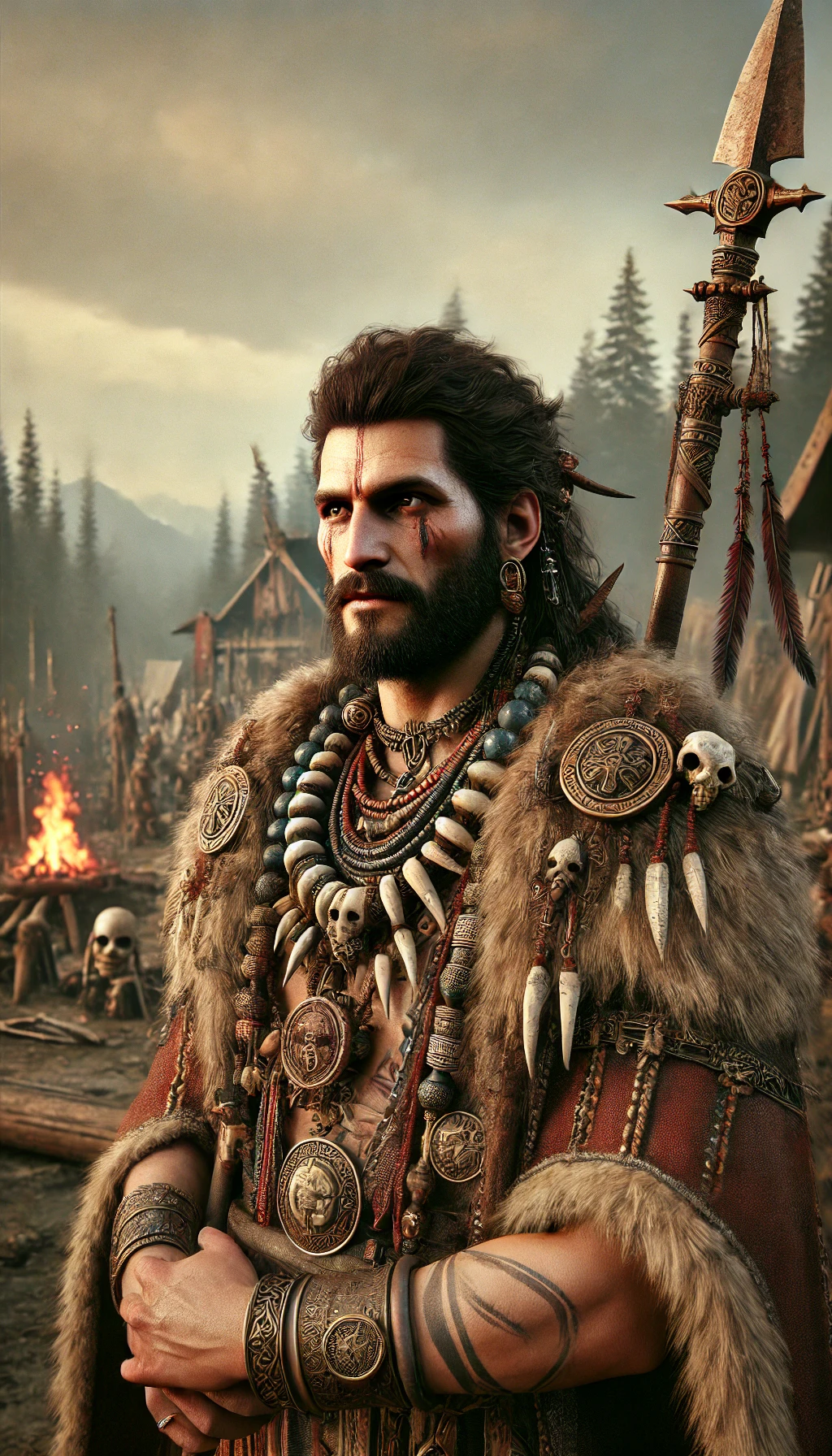
Human Clan Leader
A human clan leader is a figure of both authority and diplomacy, often chosen for their wisdom, experience, and ability to unite their people through negotiation, strategy, and empathy. Unlike the orcish clan leader, whose leadership is typically based on strength and combat prowess, a human leader often balances martial capability with intellectual and emotional intelligence, forging alliances and guiding the clan through social, political, and economic challenges. Their appearance is usually less intimidating than their orcish counterparts, favoring practical attire such as finely crafted tunics, cloaks, or armor, often with symbols of the clan’s history and achievements. The human leader’s strength lies in their ability to inspire loyalty, maintain peace within the clan, and make decisions that promote prosperity and stability. While both orcish and human leaders are revered and respected, the human leader’s role often extends into more complex realms of governance and diplomacy, while the orcish leader’s authority is more rooted in martial strength and protection.
Women's attire is equally functional yet graceful, with flowing dresses or tunics made from natural fibers, often cinched with decorated belts or sashes. Fur shawls and cloaks are worn for warmth and style, and jewelry made from bone, wood, or metal adds both beauty and cultural significance. During ceremonial occasions, both men and women don more elaborate garments, such as ceremonial robes or armor, adorned with beads, feathers, and symbolic designs. Overall, the clothing reflects a deep connection to nature, emphasizing resilience, strength, and the wearer's role within the clan, while also serving as a form of personal and cultural identity.


Ideals
Beauty Ideals
In this culture, beauty ideals are deeply rooted in symbols of strength, vitality, and connection to nature. For men, long hair and facial hair are prized as marks of good health. A strong, muscular build is seen as the epitome of masculinity, reflecting the ability to protect and provide. Tall stature is also highly valued, as it conveys a sense of authority and capability, making a man both respected and desirable.
For women, the ideals of beauty emphasize strength paired with a life-giving essence. A sturdy, robust build represents resilience and the ability to endure, while long, dark hair symbolizes a connection to the earth and a sense of mystery and allure. Wide hips are cherished as a representation of fertility and the promise of continuing the lineage, underscoring the cultural importance of family and community growth. Together, these ideals celebrate a harmonious balance of power, endurance, and the natural cycle of life.
For women, the ideals of beauty emphasize strength paired with a life-giving essence. A sturdy, robust build represents resilience and the ability to endure, while long, dark hair symbolizes a connection to the earth and a sense of mystery and allure. Wide hips are cherished as a representation of fertility and the promise of continuing the lineage, underscoring the cultural importance of family and community growth. Together, these ideals celebrate a harmonious balance of power, endurance, and the natural cycle of life.
Gender Ideals
In this culture, gender ideals are deeply tied to the values of strength, resilience, and contribution to the community, with distinct yet complementary roles for men and women that emphasize their shared importance in the survival and prosperity of the clan.
Men's Ideals: Men are seen as protectors, providers, and symbols of unwavering strength. The ideal man embodies physical power, courage, and the ability to lead or defend in times of need. He is expected to be a skilled warrior, hunter, or craftsman, capable of enduring harsh conditions and standing firm in the face of challenges. Leadership qualities are highly valued, with men encouraged to guide their families and clans through wisdom, decisiveness, and a sense of honor. Emotional fortitude is equally important, with men respected for maintaining composure and resolve under pressure.
Women's Ideals: Women are regarded as the life-givers and nurturers of the clan, embodying both strength and grace. The ideal woman balances physical resilience with a nurturing spirit, capable of raising strong children while contributing to the community’s sustenance and well-being. Fertility is highly revered, with motherhood seen as a sacred role, yet women are also celebrated for their ability to work alongside men in fields, crafting, or even combat when necessary. Wisdom and emotional intelligence are prized traits, as women often serve as advisors and mediators within the community.
Shared Ideals: Both men and women are expected to demonstrate loyalty to their clan, unwavering perseverance, and a deep respect for tradition and the natural world. Cooperation between the genders is seen as essential for the survival and success of the community, with each complementing the other’s strengths and roles. Ultimately, the culture places equal value on the contributions of both men and women, recognizing their unique yet interconnected paths in sustaining the clan’s legacy.
Men's Ideals: Men are seen as protectors, providers, and symbols of unwavering strength. The ideal man embodies physical power, courage, and the ability to lead or defend in times of need. He is expected to be a skilled warrior, hunter, or craftsman, capable of enduring harsh conditions and standing firm in the face of challenges. Leadership qualities are highly valued, with men encouraged to guide their families and clans through wisdom, decisiveness, and a sense of honor. Emotional fortitude is equally important, with men respected for maintaining composure and resolve under pressure.
Women's Ideals: Women are regarded as the life-givers and nurturers of the clan, embodying both strength and grace. The ideal woman balances physical resilience with a nurturing spirit, capable of raising strong children while contributing to the community’s sustenance and well-being. Fertility is highly revered, with motherhood seen as a sacred role, yet women are also celebrated for their ability to work alongside men in fields, crafting, or even combat when necessary. Wisdom and emotional intelligence are prized traits, as women often serve as advisors and mediators within the community.
Shared Ideals: Both men and women are expected to demonstrate loyalty to their clan, unwavering perseverance, and a deep respect for tradition and the natural world. Cooperation between the genders is seen as essential for the survival and success of the community, with each complementing the other’s strengths and roles. Ultimately, the culture places equal value on the contributions of both men and women, recognizing their unique yet interconnected paths in sustaining the clan’s legacy.
Courtship Ideals
In this culture, courtship is a carefully guided process rooted in tradition, respect, and the collective well-being of the clan. It reflects the shared values of strength, partnership, and the importance of building bonds that contribute to the community's continuity and resilience.
Men's Role in Courtship: Men are expected to initiate courtship, demonstrating not only their interest but also their worthiness as a potential partner. This often involves acts of strength, skill, or resourcefulness, such as excelling in a hunt, crafting a meaningful gift, or showcasing leadership qualities. A man must prove his ability to provide and protect, not just for his intended partner but for any future family they might create. However, respect and patience are critical—persistence must be tempered with deference to the woman’s wishes and the approval of her family.
Women's Role in Courtship: Women, while often the ones being pursued, play an active role in the courtship process. They are expected to evaluate potential suitors with discernment, looking for traits such as courage, loyalty, and emotional strength. Acceptance of a courtship is a sign that a woman sees the suitor as someone who complements her own strengths and aligns with her values. Women may also test the sincerity and capabilities of their suitors through subtle challenges or requests, ensuring the man’s intentions are genuine and his abilities proven.
Courtship Traditions: Courtship is steeped in symbolic rituals. Exchange of tokens, such as handcrafted items or elements of nature (like feathers or carved stones), is common. These gifts often carry meanings tied to the giver’s qualities or intentions. Public displays of skill, such as sparring, storytelling, or feats of endurance, are a way for suitors to earn the admiration of the clan and the approval of the woman’s family. The courtship period is not rushed, allowing both partners to build mutual respect and compatibility. Once a match is agreed by the clan leaders and families, the union is celebrated not just as the joining of two individuals but as a strengthening of the clan as a whole, reflecting the culture’s emphasis on community and shared prosperity.
Men's Role in Courtship: Men are expected to initiate courtship, demonstrating not only their interest but also their worthiness as a potential partner. This often involves acts of strength, skill, or resourcefulness, such as excelling in a hunt, crafting a meaningful gift, or showcasing leadership qualities. A man must prove his ability to provide and protect, not just for his intended partner but for any future family they might create. However, respect and patience are critical—persistence must be tempered with deference to the woman’s wishes and the approval of her family.
Women's Role in Courtship: Women, while often the ones being pursued, play an active role in the courtship process. They are expected to evaluate potential suitors with discernment, looking for traits such as courage, loyalty, and emotional strength. Acceptance of a courtship is a sign that a woman sees the suitor as someone who complements her own strengths and aligns with her values. Women may also test the sincerity and capabilities of their suitors through subtle challenges or requests, ensuring the man’s intentions are genuine and his abilities proven.
Courtship Traditions: Courtship is steeped in symbolic rituals. Exchange of tokens, such as handcrafted items or elements of nature (like feathers or carved stones), is common. These gifts often carry meanings tied to the giver’s qualities or intentions. Public displays of skill, such as sparring, storytelling, or feats of endurance, are a way for suitors to earn the admiration of the clan and the approval of the woman’s family. The courtship period is not rushed, allowing both partners to build mutual respect and compatibility. Once a match is agreed by the clan leaders and families, the union is celebrated not just as the joining of two individuals but as a strengthening of the clan as a whole, reflecting the culture’s emphasis on community and shared prosperity.
Major organizations
Clan Varghok - The Stormclaws
Clan Varkok, also known as the Stormclaws, is one of the most feared and powerful clans. Renowned for their mastery of Pohorie Redrok, they are skilled warriors, known for their brutal efficiency in battle. Their strength comes not only from their unmatched fighting prowess but also from their deep spiritual connection with the storms and winds. They believe the storms are a sign of the gods’ favor, and their shamans can reportedly call upon storm magic to aid in battle. The clan is fiercely independent, with a strict code of honor and combat. Even if they know about their power amog wild clans, they tend to stay hidden in mountains, not interfering with the conflicts.Numbers: Approximately 3,500 members, with a significant portion being trained warriors.
Location: The clan is located in Pohorie Redrok, surrounded by treacherous winds and harsh weather, which has hardened them into some of the most formidable fighters in the region. Their main stronghold is a towering fortress built into the rocks, known as Nest.
Clan Durnak - The Ironhoof
Clan Durnak, also called the Ironhoof, is a powerhouse of strength and endurance. Known for their close bond with giant warbeasts, they have tamed and trained enormous bison and warhorses to serve as both mounts and beasts of burden. Their warriors are fierce, often fighting on horseback or with their giant beasts, crushing enemies with overwhelming force. The clan has a long tradition of blacksmithing and crafting the finest weapons and armor among wild clans, making them the arms supplier for many other clans.Numbers: Around 4,000 members, with an elite force of 1,000 mounted warriors.
Location: They reside in the fertile plains and rolling hills, where their warbeasts can graze and roam freely. Their main settlement is located in The Region. Theirs fortified city is located in the heart of their territory, surrounded by vast blacksmithing workshops and war stables.
Clan Zogor - The Nightfangs
The Nightfangs, or Clan Zogor, are known for their stealth and deadly precision. Masters of shadow and deception, they are unparalleled in ambush tactics and guerrilla warfare. Clan members are highly effective assassins, spies, and saboteurs who use the cover of night to strike fear into their enemies. They also have a reputation for excellent scouts and intelligence gatherers, making them invaluable allies in times of war. The clan is ruled by a shadowy council of elders who value cunning and intelligence above brute strength.Numbers: Around 2,500 members, including roughly 500 elite infiltrators and assassins.
Location: The Nightfangs reside deep in the heart of an ancient forest known as the Blackwood, west border of Eledar , a dense and mist-covered area that provides perfect cover for their covert operations. Their main stronghold, Silentfang, is a hidden fortress carved into the roots of colossal trees, nearly invisible to outsiders.
Clan Vorg - The Wolf Riders
Clan Vorg, known as the Wolf Riders, is a powerful and secretive clan that dominates the dense forests and rugged terrain between the Stone Wolf Stones and Black Stones. Hidden within these towering peaks, the clan has thrived for generations, with their numbers now swelling to a formidable at least 15,000. They are renowned for their unrivaled mastery of both the wilderness and the beasts that roam it. Clan members have a unique bond with wolves, using these creatures not only as companions but also as battle partners, riding them with unparalleled skill. This connection is further enhanced by their deep understanding of Archana, a mystical essence that allows them to communicate with animals and nature itself. Through Archana, the clan riders can enhance their senses, augment their physical strength, and even enter a heightened state of awareness, making them nearly invisible in the woods and allowing them to strike with deadly precision.Clan Vorg is known for its patience, rarely engaging in conflict unless provoked. They fiercely protect their territory, a vast expanse of forests, valleys, and hidden caves, but they will remain largely neutral in the affairs of other clans unless their land is breached or attacked. Once disturbed, however, they are swift, relentless, and virtually unstoppable. Their warriors are silent hunters, able to track prey and foes alike through dense forests with ease, and their tactics are built around stealth, speed, and devastating surprise attacks.
Clan Vorg's strength lies in their intimate knowledge of their territory. The land is as much a part of their identity as their wolves, and they have mastered its every feature—from the dense woodlands to the steep cliffs between the Stone Wolf Stones and Black Stones. Their warriors are not only skilled in combat but are also experts in the art of survival, able to navigate and endure the harshest conditions.
Numbers: Approximately 15,000 members, with a large portion trained as elite wolf riders and silent warriors.
Location: The clan resides in the vast forests and rugged lands nestled between the Stone Wolf Stones and Black Stones. This region itself is called Skallvork - Translated as the Wolf's burrow, a labyrinth of dense forests, rocky hills, and deep ravines, is practically impenetrable to outsiders. Their strongholds are hidden deep within the forests, blending seamlessly with the natural landscape, allowing them to remain unseen unless they choose otherwise. These lands are teeming with wildlife, and the clan's bond with the wolves and the environment gives them unparalleled control over the region.
Combat Tactics: Clan Vorg is a master of ambush and guerrilla warfare. They use Archana magic to communicate with wolves and other animals, forming a vast network of scouts across the territory. Their warriors, riding swift wolves, strike from the shadows, using their enhanced senses to track and surprise enemies. When not on horseback, they move with the silence of the forest itself, their mastery of stealth making them nearly invisible to their enemies. Clan Vorg’s primary tactic is to wear down their foes through ambushes, harassment, and psychological warfare, using the terrain to their advantage. If threatened, they are known to call upon the full might of their wolf pack, overwhelming invaders with swift, brutal attacks that leave no trace of their presence. The clan does not seek to dominate other clans or engage in unnecessary conflict. Instead, they view their territory as sacred and will fiercely defend it if encroached upon, relying on their deep knowledge of the land and the support of their animal allies to outmaneuver and defeat any intruders.
"I know fate has been unkind to me, but I must admit that my choice was the cause of their death. When I remember that horror, I feel my heart break. All my men, my brothers, fell. I was the only one to survive—not because I was strong, but because they let me live. There was no chance of winning against the Wolf riders, no hope of escape. They were unstoppable, and I... I was the one who led us into the slaughter. They let me live to suffer for the rest of my days, to carry the weight of this guilt. I have become a living memory of their loss, of their heroic deaths. I stand here, among the stone graves, and I feel the silence, which is now a greater torment than any pain. It cost me my entire clan, my whole life... and I was the one who betrayed them. Every day, every step I take, is a reminder that their fate was sealed by my recklessness."

Diverged ethnicities
Encompassed species
Related Organizations
Languages spoken
Related Locations
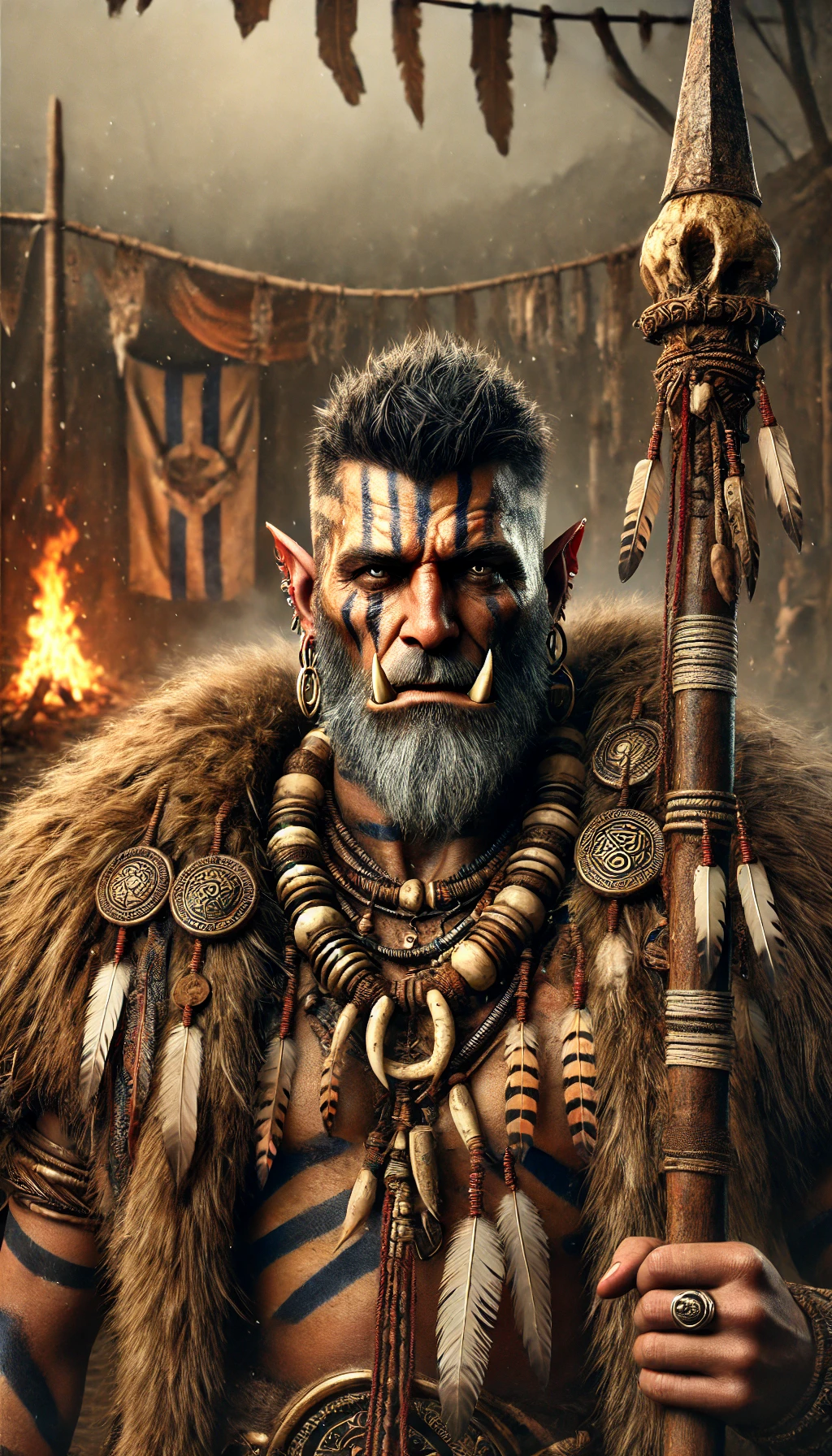
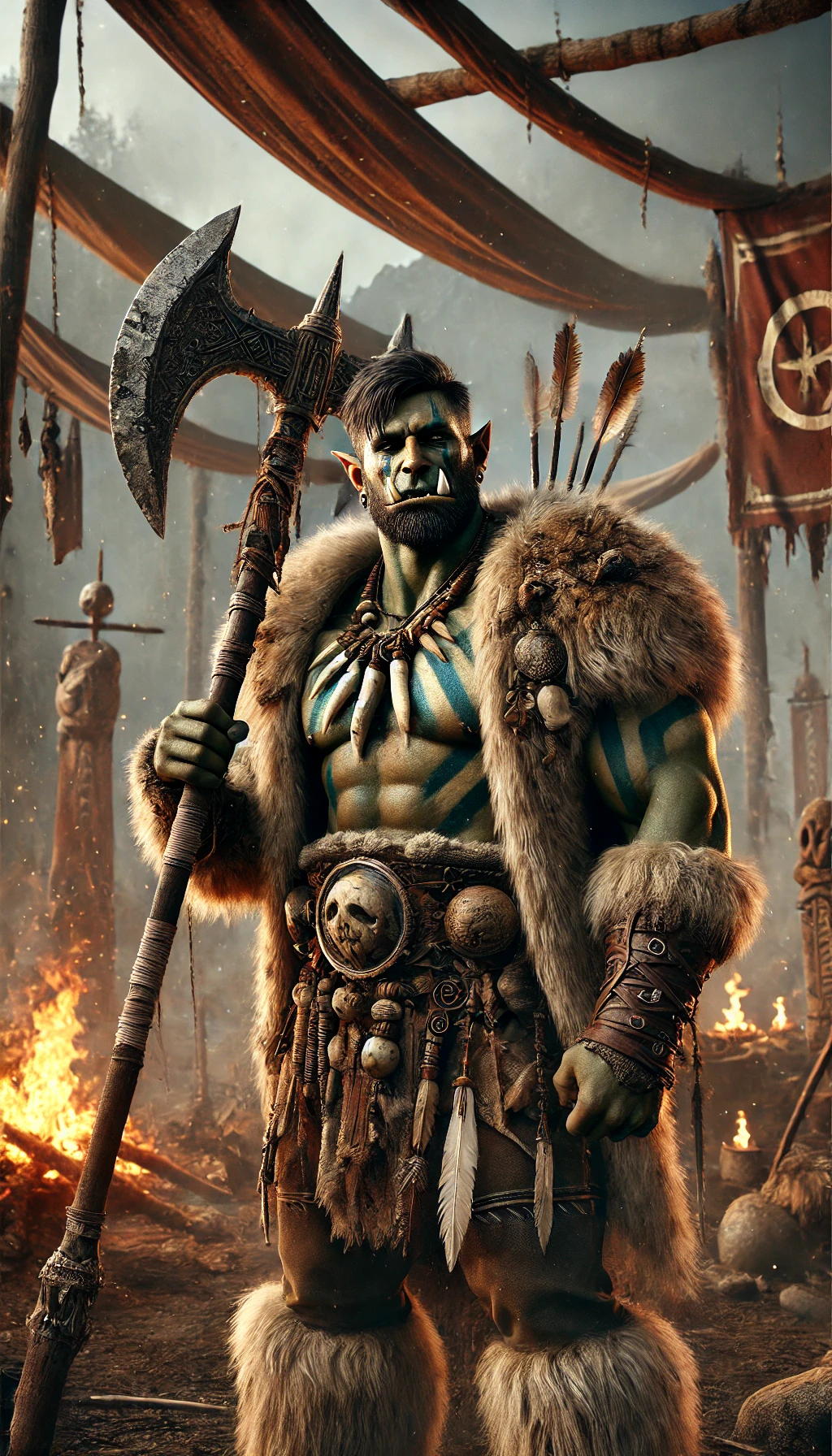
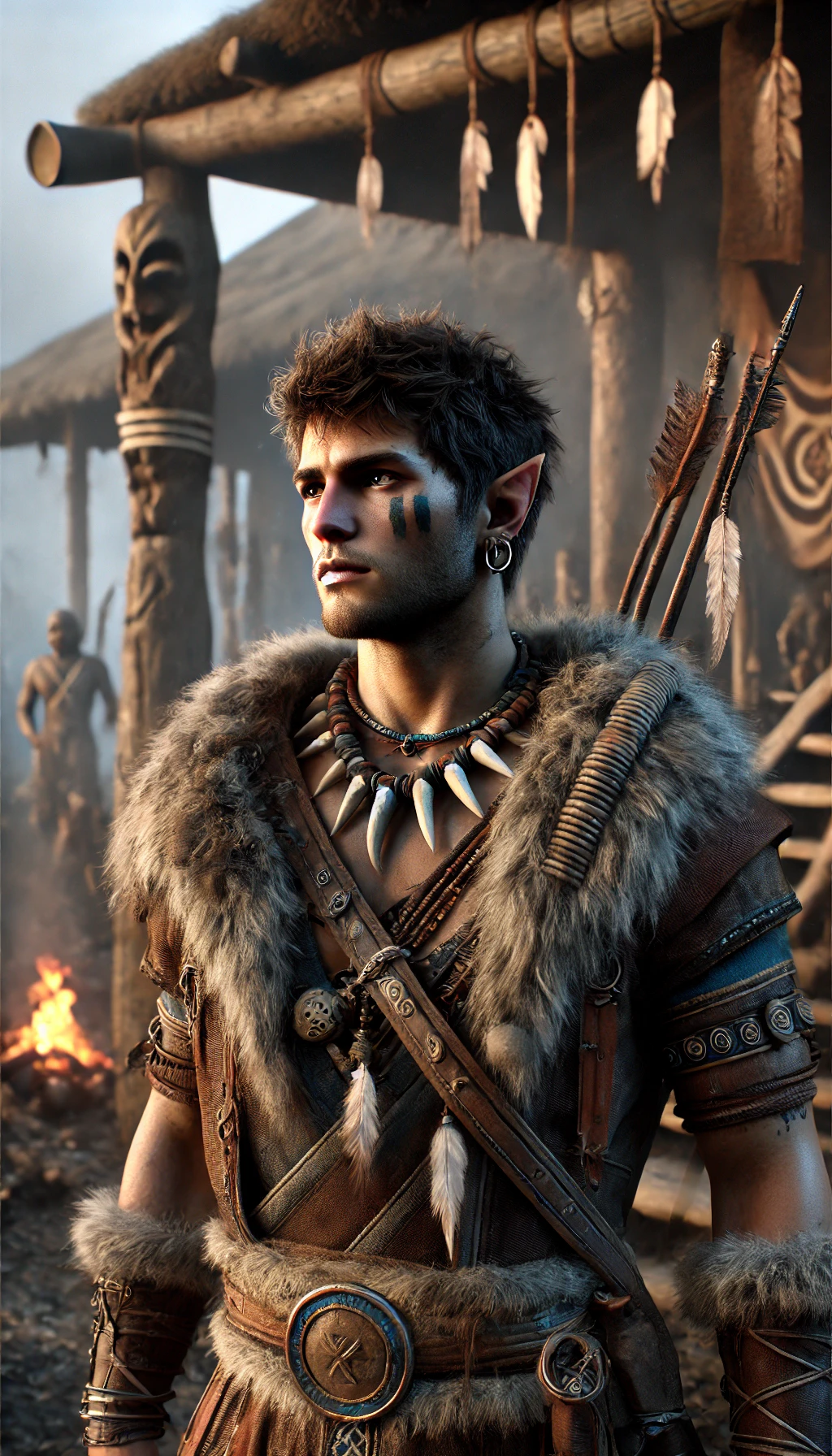
List of articles in this path
1.Welcome
2.Look Around
3.Thalarians
4. The conflict
5.Wild Thalarians
6.Krallhage
7.Syndar
8.Back at home?
Remove these ads. Join the Worldbuilders Guild









Comments